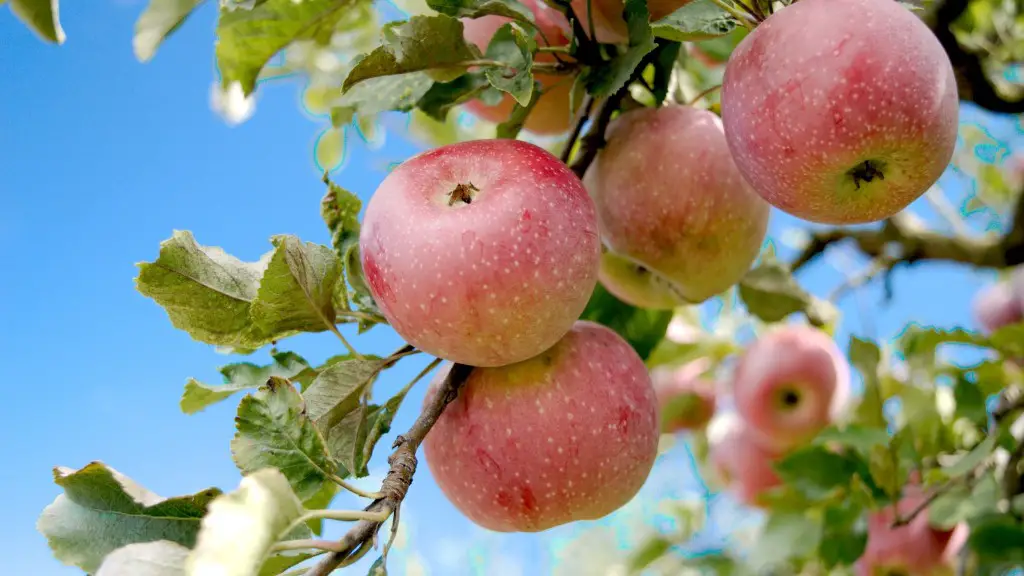Background Information
Avocado trees are a type of tropical fruit tree that is originally from Central and South America and grows in tropical to mild climates. They are very popular worldwide, and are used in salads, guacamole, sandwiches, and other dishes. Growing an avocado tree can be rewarding and is relatively easy. It’s important to understand the basics of cultivating the tree, such as planting and pruning, in order to have a successful harvest.
Planting an Avocado Tree
The best climate to grow an avocado tree is one that is warm during the day, but cools off during the night. If possible, try to pick an area that receives full sun. The soil should be well-drained and have some organic matter to provide the best environment for the tree to thrive. If the soil is clay-like or lacks adequate drainage, then it may be beneficial to add compost to the soil or even plant the tree in a raised bed.
When preparing to plant the avocado tree, be sure to choose a tree that is relatively small for the container, as it will be easier to transplant and will become established more quickly. Once the tree is planted, water it generously with a soaker hose to ensure that the roots are adequately watered and to help your tree thrive.
Care and Maintenance of the Avocado Tree
In order to maintain and care for an avocado tree, it’s important to be aware of the local climate and to monitor the environment for signs of stress or deficiencies. An avocado tree needs about 1 inch of water per week, so if there isn’t enough rainfall, then supplemental irrigation may be necessary. If the soil isn’t well-drained or the environment is too wet, root rot may occur and can be a major setback.
Avocado trees need to be pruned regularly to keep them healthy and allow for new growth. Pruning will also help to keep the tree manageable and make it easier to monitor the fruit. It’s important to remove any dead or damaged branches and to thin out the canopy to create airflow and light in the center of the tree.
Harvesting the Avocado Fruit
Avocado trees can take anywhere from 4-10 years before they are ready to bear fruit and will produce anywhere from 20-100 fruits a season. It’s important to be aware of the common pests and diseases in the area, as these can impact the health of the tree and potentially the quality of the fruit. At the end of the season, when the fruit has slowly started to lose its hard green skin, harvest the fruit by cutting them from their stems.
Proper Storage of Avocado Fruits
Once the fruit has been harvested, it’s important to store them properly in order to extend their shelf life. Avocado fruits should be stored at room temperature and not in the refrigerator. Refrigerating them will cause the fruit to darken and lose its flavor. The fruits can also be frozen in an airtight container for up to 6 months, although the texture and flavor of the frozen avocado may not be as robust.
The Benefits of Planting an Avocado Tree
The benefits of planting an avocado tree are many. It’s an investment that will benefit generations to come with its long-lasting production of delicious fruits. Growing an avocado tree is also a great way to teach children about the cycle of nature, as they can witness the tree’s growth and be rewarded with delicious fruits in the end. Additionally, planting an avocado tree helps to offset the environmental impact of buying fruits that have been shipped in from other countries.
Soil Quality and Fertilization
It’s essential to have the right soil balance in order to grow an avocado tree. If the soil is too sandy, add organic matter in limited amounts to help retain moisture and nutrients. Additionally, a balanced fertilizer should be applied once a month during the growing season. The fertilizer should have a balanced ratio of nitrogen, potassium, and phosphorus, as this will help to ensure the tree receives the nutrition it needs.
Protection From Extreme Weather Conditions
Avocado trees are susceptible to extreme weather conditions, such as extremely cold temperatures, hail, and strong winds. If possible, provide protection from these elements by planting the tree in a sheltered area of the garden, such as near a wall or fence. Additionally, if an area is especially prone to frost, wrap the tree with blankets or a frost cloth in order to keep it warm during cold temperatures.
Managing Pests and Disease
Managing pests and disease is essential when growing an avocado tree. The most common pests are aphids, mealy bugs, and scale insects. These can be managed with natural methods, such as introducing beneficial insects or spraying the tree with a mixture of soap and water. Disease can also be managed by ensuring the tree is in a healthy environment; this means maintaining good soil health, adequate watering, and pruning regularly.
Avoiding Overwatering or Drought Situations
It is essential to avoid overwatering or drought situations, as this can lead to a decrease in the quality and quantity of fruits produced. Watering the tree when the top inch of the soil is dry should be sufficient, and be sure to check the soil regularly and assess if any additional watering is needed. It’s also important to mulch the soil around the tree and ensure that the drainage is adequate to help avoid rot and other issues.

